The 13 Worst Things I Found on Craigslist While Looking for a NYC Sublet
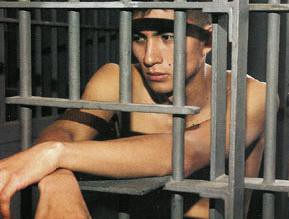
• “We are a house of makers, doers, and artists. One of us is an installation artist, another is a writer and hot rock singer, one is a printmaker, one is a southern fashion designer, one does special effects makeup.”
• “There is a cat you will be caring for.”
• “The room is shared with a lovely young woman and as such, only females need apply.”
• “Couples/420/cigarettes/drinking totally ok, but NO PETS.”
• “Room DOUBLES AS A MUSIC TEACHING STUDIO from 9:30 AM — 9:00PM ON WED, THUR & FRIDAY so you would need to be out during these hours on these days.”
• “I smoke in the kitchen, but only there and a heavy curtain blocks the door.”
• “1br — Open House!-Curtained living room available from June 5, female only”
• “It is a shared, converted 1 BR, Upper East Side apartment. The converted area can be hidden by a curtain. I tend to stay in my room when at home, and would never encroach upon your space.”
• “SHE’S A FASHION DESIGNER AND CAN SHOW YOU AROUND TO SOME PRETTY COOL PLACES IF YOU’D LIKE.”
• “There is even access to a phone!”
• “SINCE IT IS A LOFT, WE DO NOT HAVE TRADITIONALLY BUILT PRIVATE BEDROOMS. INSTEAD, THEY ARE SEMI-PRIVATE SLEEPING AREAS. WE ARE VERY FRIENDLY AND FLEXIBLE PEOPLE.”
• “Shared studio.”
• “I am a German guy in my thirties with a small but very cozy and warm apartment to share on the Upper East. I sleep on a futon in the living room; you have your own private room with a window going out to the fire escape.”
Bigfoot Makes Surprise Appearance On Hiker's iPhone Video
This new video of Bigfoot was shot last week in the woods near Spokane, Washington, where the Spokane Indians used to speak of giant, stinky “men stealers” who would come into their lodges and abduct people at night. Also nearby, a gold prospector named Karl Breheim reported damage to his metal toolbox that looked “like a giant man had munched a white-bread sandwich.” Those woods are very beautiful. But I will never go there because of the obvious mosquito problem.
Go Hear Some Music
Fans of composer/guitarist Larry Polansky, the subject of this installment of Difficult Listening Hour, take note: He’s part of the lineup in what sounds like a pretty amazing collection of experimental performances happening here in town over the next two weeks.
Members of Congress Whom I Would Have Preferred to Have Tweeted Photos of the Nouns in their Last...
Members of Congress Whom I Would Have Preferred to Have Tweeted Photos of the Nouns in their Last Names
by Ruth Graham

14. Maxine Waters
13. Raul Labrador
12. Daniel Coats
11. Phil Roe
10. Jeff Flake
9. Edolphus Towns
8. Emanuel Cleaver
7. Dave Camp
6. Charles Bass
5. Frank Wolf
4. Ed Pastor
3. Steve Israel
2. Marcia Fudge
1. Mike Honda
An Excerpt From 'Of Lamb'
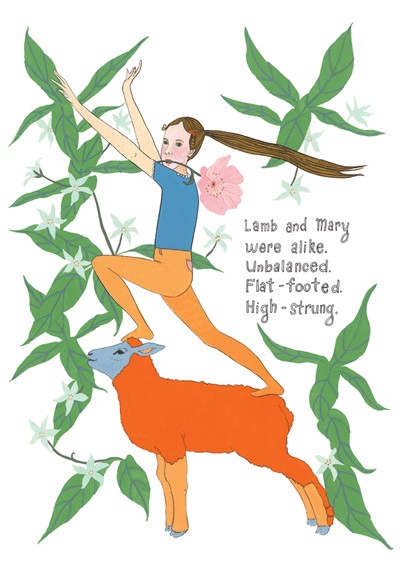
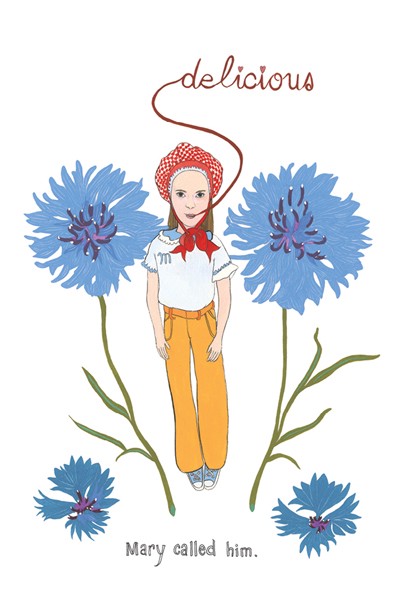
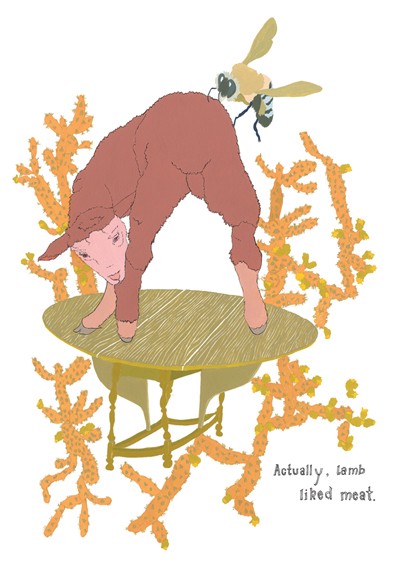
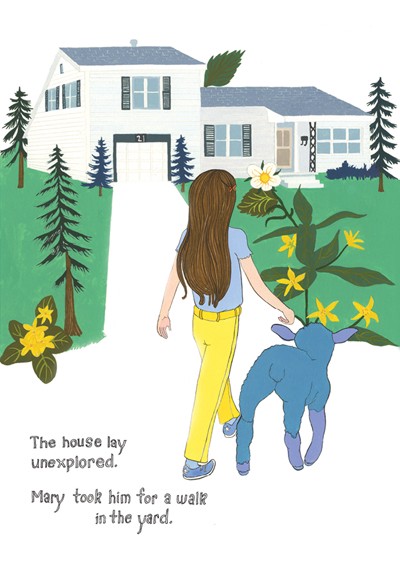
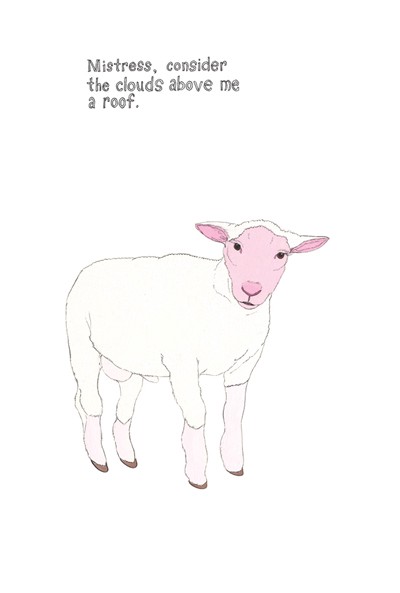
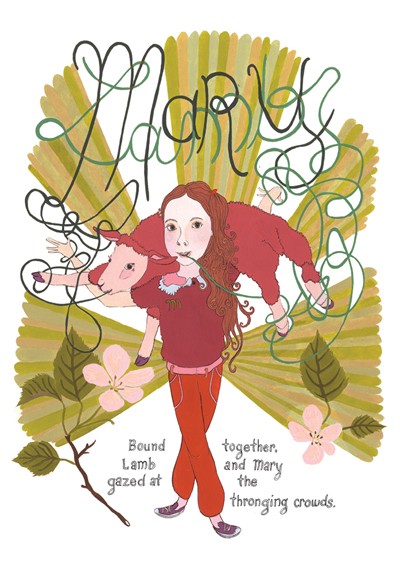

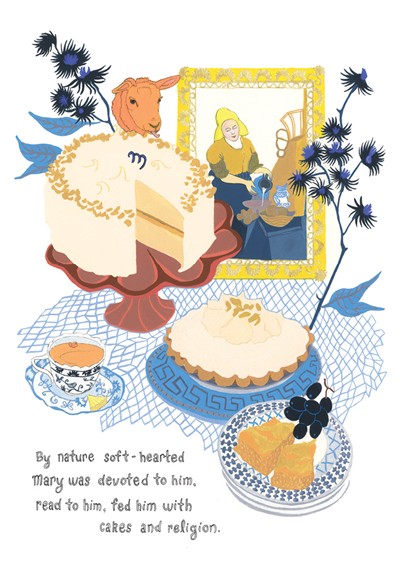
Amy Jean Porter’s new book, Of Lamb, a collaboration with the poet Matthea Harvey, comes out June 7. This excerpt is from the complete story of 106 paintings and poems. You can order your copy now — or, even better, pick one up at the book’s release party, which happens tomorrow, June 2nd, 7 p.m., at Cabinet in Brooklyn. There’s also an exhibition at P.P.O.W. gallery opening June 23. New York mag gave its stamp of approval.
OMG Look At Those Chipmunk Cheeks!
Here you will find a picture of a chipmunk that has stuffed its face with corn.
'Fanny Hill': Weapons Of Pleasure
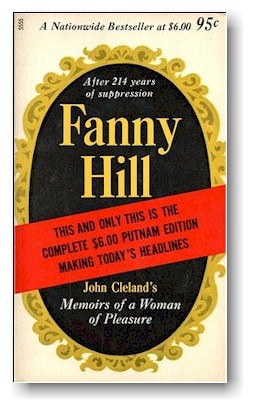
Oh, my darlings. If you’ve somehow managed to miss The MacGyver Rage Incident spawned by our last installment, please do catch up here. I have carefully sifted through our cultural detritus to ensure that John Cleland, author of this week’s dusty gem, Fanny Hill, a.k.a. Memoirs Of a Woman Of Pleasure, has no similarly hyped-up, under-medicated relatives who might conceivably call for my blood to be spilled in an act of ritual atonement. (Prove me wrong, hyped-up, under-medicated relatives of John Cleland!)
Let’s talk a little bit about said illustrious author first. When you initially learn that the novel was written in debtor’s prison, you may imagine a sad wastrel of a man, slinging his tin cup against the bars, wishing he hadn’t stolen that loaf of bread to feed his freaky, perverted family of flagellists and [insert fetishes we probably don’t even have any more because various animals have gone extinct in the interim]. Well, no, as a matter of fact, he just got himself impressively in hock for 840 pounds, which was A Whole Lot of 1748 Dollars, basically. So, you know, the sort of man who would probably build casinos and unattractive apartment buildings he couldn’t really afford while maintaining various revolving lines of credit. Ahem. And then he wrote a pornographic novel (plus some other books, but we don’t care about those.) He may also have been a ‘mosexual; once we get to his Mr. Garrison-like descriptions of the quote unquote male member, you can draw your own conclusions.
Make no mistake, this is a pornographic novel. It’s not, oh, it’s the 18th century, and he runs his hand over her heaving bodice, blah blah. It is pure filth. What fun for us! (If you’ve missed reading it, the full text is all over the Net, including a free Kindle edition, so make haste to remedy the situation and rejoin us for our discussion.) No, it is truly, truly pornographic. Erotic? Depends what floats your boat, really. Girlfriend manages to make pit stops to engage in at least forty separate types of perversion. (Note: “Perversion” used here purely as a descriptive adjective, mind! All forms of human sexuality art rich and beautiful in the eyes of Classic Trash!)
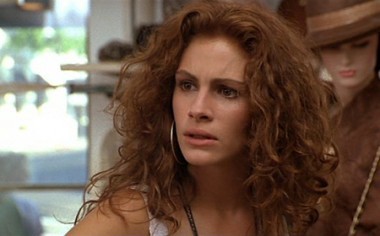
Dear Fanny Hill is born to pious, yet impoverished parents, they die, she goes to London with a couple of gowns and a little over eight guineas — you know, the whole “I got off the bus at Port Authority with a pair of jean shorts, sixty bucks, and the phone number of some chick who went to my high school who had a one bedroom with a fake wall in Alphabet City” deal. And, of course, within 15 seconds, girlfriend finds herself a pimp (well, madam, technically), who pretends she’s looking for a nice lady’s maid. (She’s not.) And then it’s your standard chaka-chaka-wow-wow for the next few hundred pages, starting with her sapphic deflowering at the hands of a super-elderly hooker of 25 years of age who explores her “two hard, firm rising hillocks, that just began to shew themselves,” followed by “the soft silky down that had but a few months before put forth and garnished the mount-pleasant of those parts,” followed by some fruitless poking at what I BELIEVE is supposed to be her hymen, but, obvi, we’re saving that for the male member.
Which member, you know, so inflames her when she eventually spots one that she makes sad, desultory jabs at herself, which, minus a male member, are of course doomed to fail. “At length, I resorted to the only present remedy, that of vain attempts at digitation…” Not that she thinks herself CAPABLE of experiencing true penetration: “…having very curiously and attentively compared the size of that enormous machine, which did not appear, at least to my fearful imagination, less than my wrist, and at least three of my hand-fuls long, to that of the tender small part of me which was framed to receive it, I could not conceive its being possible to afford it entrance without dying, perhaps in the greatest pain…”
It takes her about nine pages of ceaseless battering before a young man manages, finally, with “one violent merciless lunge” to overcome her iron hymen, followed by about two days of profound agony, but, eventually, “the true unalloyed relish of that pleasure of pleasures, when the warm gush darts through all the ravished inwards; what floods of bliss! what melting transports! what agonies of delight!”, etc. etc., and she finally gets to be super-slutty and totally into it for the rest of the book. Which, in case you missed it, serves her well indeed, considering she has do a lot of freaky shit. (This is after her beloved is sent away to sea by his family, leaving her destitute and needing to turn tricks, of course.) Don’t worry, he eventually comes back, and they do it twice.
Is it any good? Why, it’s VERY GOOD. In that way that everyone’s penmanship used to be all pretty, you know? Cleland has a great turn of phrase, even when it’s not particularly explicit in nature. “…all my foundation in virtue was no other than a total ignorance of vice.” I mean, right? You could drop whole chunks of Fanny Hill into Samuel Richardson’s Pamela, or Virtue Rewarded, ain’t no one gonna notice.
Context-Free Excerpts From Fanny Hill Which Support The Idea That John Cleland Probably Preferred The Company Of Men — And Was Likely A Size Queen To Boot
• “Then the cavity to which she guided my hand easily received it; and as soon as she felt it within her, she moved herself to and fro, with so rapid a friction, that I presently withdrew it, wet and clammy, when instantly Phoebe grew more composed, after two or three sighs, and heart-fetched Oh’s! and giving me a kiss that seemed to exhale her soul through her lips, she replaced the bed-clothes over us.”
• “The whole greasy landscape lay fairly open to my view; a wide open mouthed gap, overshaded with a grizzly bush, seemed held out like a beggar’s wallet for its provision.”
• “Her sturdy stallion had now unbuttoned, and produced naked, stiff and erect, that wonderful machine, which I had never seen before, and which, for the interest my own seat of pleasure began to take furiously in it, I stared at with all the eyes I had…”
• “I admired then, upon a fresh account, and with a nicer survey, the texture of that capital part of man: the flaming red head as it stood uncapt, the whiteness of the shaft, and the shrub growth of curling hair that embrowned the foots of it, the roundish bag that dangled down from it, all exacted my eager attention, and renewed my flame.”
• “…that fierce erect machine of his, which threatened no less than splitting the tender victim.”
• “He looked upon his weapon himself with some pleasure.”
• “The flaming point of this weapon of pleasure.”
• “…its globular appendage, that wondrous treasure bag of nature’s sweets, which revelled round, and pursed up in the only wrinkles that are known to please, perfected the prospect.”
• “…not the play thing of a boy, not the weapon of a man, but a Maypole, of so enormous a standard, that had proportions been observed, it must have belonged to a young giant.”
Okay, I think we get it.
A Single Context-Free Excerpt From Fanny Hill Which May Put You Off The Whole Idea Of Finding Employment As A Sex Worker
• “Imagine to yourself, a man rather past threescore, short and ill-made, with a yellow cadaverous hue, great goggle eyes, that stared as if he was strangled; an out-mouth from two more properly tusks than teeth, livid lips, and breath like a Jake’s: then he had a peculiar ghastliness in his grin, that made him perfectly frightful, if not dangerous to women with child; yet, made as he was thus in mock of man, he was so blind to his own staring deformities, as to think himself born to please, and that no woman could see him with impunity: in consequence of which idea, he had lavished great sums on such wretches as could gain upon themselves to pretend love to his person, whilst to those who had not art or patience to dissemble the horror it inspired, he behaved even more brutally.”
Let’s Discuss:
• Pretend you are a hyped-up, under-medicated, email-savvy relative of John Cleland who demands blood-expiation from me for my insolence. What is your opening throw-down?
• You take three separate classes in 18th-century literature as an undergraduate. Six years later, you get to reference Samuel Richardson’s Pamela, or Virtue Rewarded for an unpaid stint as a reviewer of Classic Trash. Do you feel vindicated, or do you begin to support those who say that four-year degrees in liberal arts should be replaced with vocational classes in basic auto repair?
• Picture Pretty Woman, but with all the dialogue replaced with John Cleland’s. Is the Rodeo Drive scene weird, or kind of Dadaist and amazing?
• Lesbians, do you have an opinion on the suggestion that what you really need is “more solid food,” and to give up “this foolery of woman to woman”?
• Which book shall we process next? I leave the choice in your capable, trashy hands. I’ll announce the Official Choice in the comments here in a few days.
BONUS:
• Refer to someone’s sack as a “wondrous treasure bag of nature’s sweets” with a straight face, receive our undying admiration and love.
Nicole Cliffe is the proprietress of Lazy Self-Indulgent Book Reviews.
Reaction To Odd Future Mixed, Young Journalist Reports
“Odd Future is filled with tons of controversy and they’re going to have a lot trouble moving forward, becoming ‘mainstream.’ But Tyler the Creator is going to work hard at that. And so far he has a ton of Notre Dame fans. But even haters.”
— Some students at the tony Los Angeles Catholic school Academy of Notre Dame de Namur love the rap group Odd Future. Others do not. Student documentarian Arman Mahramzade examines the phenomenon.
The 'Times' As Tardy Leader and the History of Women's Suffrage
by Jane Hu
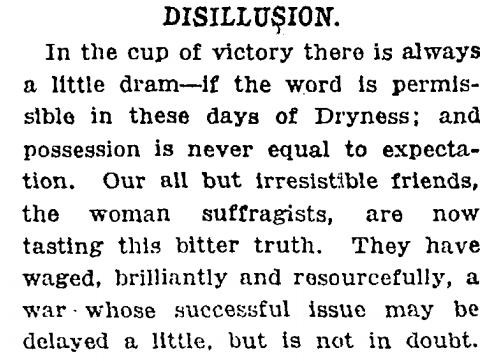
The New York Times addresses current issues in three ways: as expressions of guidance on the editorial page, as expressions of individual opinion on the op-ed page, and as worthy (or not) of news coverage or analysis in the rest of the paper. It has grappled with how to cover Israel, for instance. And for the last 30 years, it has struggled with how to cover gay people. Now the paper has moved in all three departments from following to leading, from first using the word “homosexual” in 1926 to (tardily) using the word “gay” to pioneering gay wedding announcements. What can we learn about the paper’s process of leading, following or getting out of the way from its coverage of the women’s suffrage movement — and of the relationship of this coverage to future successes of social movements?
By 1920, women’s campaign for suffrage in the United States had dragged on for too long. The movement — generally cited as instigated at the 1848 Seneca Falls convention for women’s rights — was in its seventh decade when the 19th Amendment was passed.
Wyoming Territory had already granted women suffrage in 1869. Before the end of the century, Wyoming, Colorado, Utah and Idaho had all approved state suffrage. When Washington ratified suffrage on March 22, 1920, the United States had seen 35 states admit the female vote. With only one more state needed to effect a constitutional amendment, August 1920 still found many anti-suffragist men and women who opposed ratification by a 36th state. Even after Tennessee provided the final 36th ratification, suffragist opposition wholeheartedly believed that the amendment would never pass the House.
And when it did, newspapers across the country declared the age of the woman’s movement as over. Having received their long sought-after vote, what else might there to left to desire?
It might be easy to recognize now how such constitutional milestones only gesture (and quite belatedly) toward the pervasive social processes and tensions of a culture. While the struggle for sexual equality did not end on August 18th, neither did it begin with the 1848 convention. Yet, one’s inclination to view “movements” as bracketed by locatable historical moments is perhaps even more significant in regards to the suffragists, who expanded the means of articulating what defined a feminist “moment” via print culture. As Elizabeth Cady Stanton declared at the 1848 convention: “He has compelled her to submit to laws, in the formation of which she has no voice.” The decades leading up to the 19th Amendment involved a growing emergence of a public female voice via suffragist newspapers, journals, and pamphlets. Through these dominantly female-run and -read publications, suffragists engendered a material reality for a public that was largely — if at all — viewed in the abstract.
Understanding that to be heard is to be read, suffragists sought to express themselves in print. Stanton and Susan B. Anthony first published their feminist newspaper The Revolution in January 1868. Two years later, Lucy Stone and husband established The Woman’s Journal (later bought by Carrie Chapman Catt and turned into the official journal of the Woman Suffrage Party in New York). Other notable suffragists also founded newspapers, as in the case of Alice Paul’s weekly The Suffragist in November 1913. These are a notable few of the many that gained popularity in the United States (London experienced its suffragists’ presses earlier and more militant).
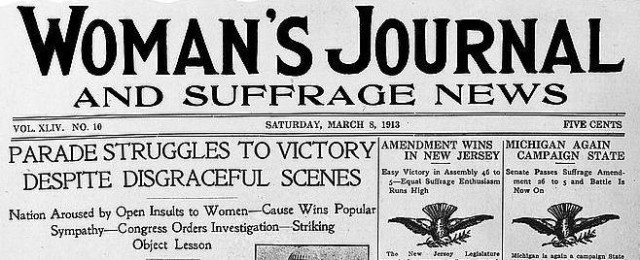
To their contributors, Stanton and Anthony advised, “Don’t preach. Don’t even exhort. Don’t philosophize. Above all, don’t sentimentalize. Give us facts and experience in words, if you please, as hard as cannon balls.” While Stanton and Anthony warned against impassioned language, their paper was nonetheless seen as the more extreme of the suffragist presses. In Voices of Revolution: the Dissident Press in America, Rodger Streitmatter observes how “The Revolution’s editorial agenda was too radical even for most supporters of women’s suffrage.” New York’s Commercial Advertiser characterized The Revolution as “Amazonian.”
And the Times depicted the paper as “meaningless,” foolish,” and “a victim of illogical thinking.” (The New York Sun, in its turn, described Anthony and Stanton with equally inventive adjectives: “The quiet duties of daughter, wife or mother are not congenial to these hermaphrodite spirits who thirst to win the title of champion of one sex and victor over the other.”) Although these anti-suffrage presses — unsurprisingly run, in large, by men — did belittle the push for women’s enfranchisement, they were, perhaps more tellingly, for the most part relatively quiet on the topic.
Many editors saw the suffrage movement as a “woman’s story” that required a female perspective and, for the most part, suffrage news didn’t make the paper at all. Archives of the Times reveal their suffrage-related articles distinctly increase during the 1908 rise of militant suffragism and the seasons leading up to the final 1920 amendment. Finding it enough to oppose suffrage flat-out, the Times hardly bothered to defend their stance. Perhaps evidence of how little their readers needed convincing, the Times mainly printed fact-based reports on elections and rallies, rather than opinions. Starting in January 1920, each time a state ratified suffrage, the Times would make a short mention of vote ratios on their front page.
Beyond this, the Times would occasionally demonstrate their view of the whole matter through a few patronizing — if at least sympathetic — editorials.
One June 4, 1920, editorial titled “Disillusion,” filled with rhetorical questions, reads like a Victorian yellowback:
“Woman, lovely woman, ah, where and what is she in the fateful hours when the cards are being stacked and the cunning old players are reckoning up their possible points? The women folks are allowed and urged to vote. Each side adores their votes and woman suffrage more than the other. Is voting all they have to do? Is a national convention, after all, a lodge meeting where women are admitted to the public entertainment but can have no hand in the business, which is transacted in rooms carefully protected from feminine visitors? Is politics a game of skill which politicians, for all their flatteries and fine words, don’t think women fit to play? Are women welcome only in the election booth, but excluded from the arcane councils where the men they are to vote for are named? What sort of equality of sexes is this? The women have the show, the men the substance.
Therefore is there a little sadness, mingled, perhaps, with surprise and resentment, in many suffrage bosoms. […] There is a big speck within the garnered fruit. A shade of disillusion darkles on the joy. They deserve the most respectful sympathy. They are finding out how much juggling, false pretense and humbug there is in this wicked world of trousered politicans.”
Another July 16 editorial, “Parties and Suffrage,” is unabashed in its derision for politics but also for earnestness, and therefore equal rights:
“The hopes and fears, whether real or feigned, of candidates and parties about woman suffrage belong really to the national stock of humor. Each party is perfectly willing to give the women the right to vote. Possibly it is not the sanest and wisest way of dealing with a permanent change in the political life of the United States to bid for it, as each party does. Except for that, there probably isn’t the shadow of the faintest line of political strength, one way or the other, in the whole business.
The women folks are sure to get the vote by Federal amendment. The men are falling over one another in their natural anxiety to show the earnest depth and profound conviction of politics and politicians.”
When it came to printing the opinions of others, the Times knew who to approach:
“Women are the best thing God ever made,” prefaced a legislator in black alpaca, “and I would not pollute them by allowing them to wade through the filthy waters of politics. My wife, nine daughters and eight daughters-in-law think I can represent them at the polls and I guess what’s good enough for them will have to be good enough for the rest.”

The Times did finally allow a few female perspectives onto their pages. Playwright and journalist Anna Steese Richardson published two long editorials on the Republican and Democratic conventions titled Lesson Women Learned at Chicago and Women at Two Conventions respectively. Writing in a tone unlike anything else the Times printed on suffragism, Richardson’s pieces underscore the divide between so-called masculine objectivity and feminine affect. By attributing such impassioned prose to a female byline, the Times could label suffrage as a female concern: one that elicited emotion over straight facts. Yet, Richardson’s reports also offered readers something else that the Times had refused to provide until then — a plurality of perspectives. Reporting from the stands, Richardson aims to place the reader amid the various women attending the convention:
“One of them advised me that the problem of her local committee was to get in touch with the common people, to make politics interesting to the masses of women. Another said that it is frightfully difficult to regulate the size of contributions from newly rich women who wished to climb socially through political benefactions.”
The playwright in Richardson knows how to set a scene and goes on to describe a range of women diverse in their interests. Moving among the suffragists, she presents the possibility of vast differences between citizens ultimately striving for the same goal.
By illustrating how those identified as suffragists cannot be easily defined or delimited, Richardson suggests how little the reader might comprehend about the movement. Against the closed doors, which the Disillusion editorial allows only for male occupancy, Richardson emphasizes that women have been toiling at their own quiet work: “The real doings were conducted by small groups, close corporations of experienced women, behind closed doors.” And these experienced women “were there for the purpose of learning more about [the democratic] party, its methods, its policies and its leaders. They demanded facts, and woe unto the man who offered them less.”
And she explained the experience of attendees.
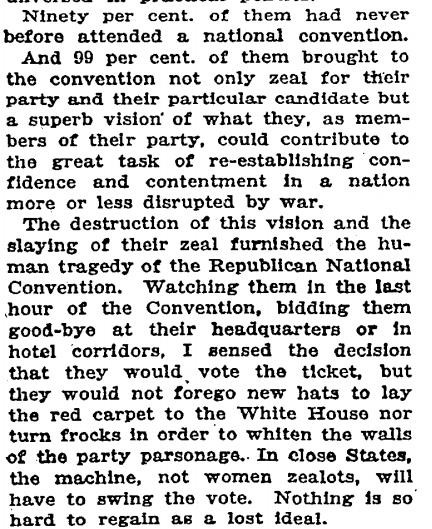
Once ratification by a 36th state appeared in its impending state on the near horizon, editorials quickly turned to look toward the future. The writer in “To Educate Our Rulers” poses the question: “With ratification of the Suffrage Amendment now virtually assured, the country will begin to ask, What next is to be done?” After this initial sign of hopeful projection, the article quickly regresses:
“The attainment of the right of suffrage is only the beginning of a long experiment, beset by many difficulties. Some of them are appalling. There is, for example, the question of the colored woman in the South. There are the foreign-born women of the great cities in the North. There are the sheltered classes and the ignorant classes. Will they not feel ‘the weight of too much liberty’?”
Now that women will soon have the vote, the writer suggests that the future will hold women interests as unnecessary and obsolete:
“We mean the intolerance, the intense sex-consciousness, the angry assaults, the resentments, the absorption in a single aim […]. With the vote won, there will be no need for the employment of such weapons, if there ever was. The women voters must expect to merge into the general mass. They can no longer stand as a class, or ‘interest,’ apart.”
Such sentiments might be premature, but they are also in part archaic notions of femininity. Read against Richardson’s articles, this editorial fails to offer any persuasive image of a viable future for the sexless “general mass.” And most of the paper follows this idea of the suffrage movement as enclosed in bubble — a time capsule that affected, at most, only one generation of women.
Among the many editorials that ridiculed suffragism, one published two days after the August 18 ratification strikes an unusual tone of sincerity in its hesitancy:
“public men in all times have been tempted to exaggerated speech. Even bearing this in mind, it is a bit daunting to read some of the superlatives used about the triumph of woman suffrage. Governor Cox leaves most competitors far behind by his assertion that through the vote of the Tennessee Legislature ‘the civilization of the world is saved.’ If that were so, we had all better abandon campaigns and elections and at once order our ascension robes….
False hopes will be roused. People will expect the political millennium to dawn immediately; but it will not. Worse than that, exuberant rejoicing will tend to make the country forget the grave perils which go along with the full enfranchisement of women. It is a time for reflection, for serious study, for sober taking of counsel, not for sounding the loud timbrel.
The true importance of the suffrage movement — inadequately represented throughout the pages of the Times — emerges briefly in this editorial. The call “for reflection, for serious study” is why one might seek to read the Times retrospectively — an analysis that leads, for the most part, to dead ends. Especially now as the paper turns once again toward new and future changes, we might reconsider how a single press — powerful then and still now — shaped and guarded a population’s definition of citizenship. As “movements” pass through the pages of the Times, readers and writers are urged to reevaluate the legal, moral and rhetorical definitions of citizenship so that they might finally refine them.
The contents of a newspaper are, by definition, perpetually in flux. But not by much. Only when seen from enough of a vantage does a long-standing press expose its lack of narrative sense and instability of narrative authority. Immediately, one perceives editorials diverge and short-circuit into the multiple perspectives so easily offered up in Richardson’s pieces. A distant reading of the Times reveals just how much it has ideologically shifted with the culture it speaks for, and how much it has yet to.
Jane Hu is our official correspondent for very recent history.
Dear Vancouver, Please Don't Boo Our National Anthem
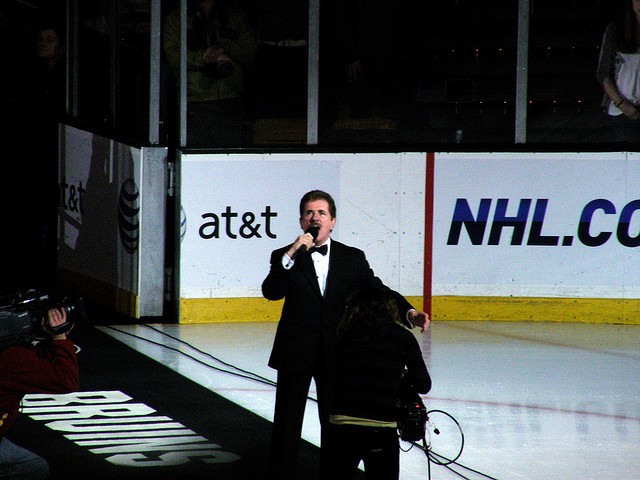
That the Vancouver Canucks and the Boston Bruins will meet in the Stanley Cup Finals tonight is very fitting. I recently watched the run of “Studio 60 on the Sunset Strip” on Netflix (great acting, surprisingly bad writing) and it was Bradley Whitford’s Danny that didn’t want to film a movie in Vancouver. “We’re not shooting in Vancouver. I’m drawing the line on the insanity. Vancouver doesn’t look like anything. It doesn’t even look like Vancouver. It looks like Boston, California.” That was maybe the one laugh-out-loud line for this former New Englander. It’s nice to think that Boston has a West Coast Canadian Dopplegänger. The Vancouver Canucks have not won the Stanley Cup in all of their 40 years of existence. Which include some of the most awesome uniforms in the history of all sports. My Boston Bruins have not won in my lifetime. They last won a Stanley Cup eight months before I was born. In the early ’70s, Boston was a hockey town and Bobby Orr was its overlord. But I come not to write about hockey, today. I come to write about National Anthems.
Rene Rancourt is a Boston Garden Legend. Age Unknown, he has been singing the American and the Canadian National Anthems before Bruins games for 35 years. He is, quite frankly, The Man. In 2004, the Bruins’ rivalry with the Montreal Canadians mixed in with politics in the first round of the playoffs. Montreal fans brutally booed the U.S. National Anthem during the first two games of the First Round of the Playoffs. In response, the Boston fans stood and cheered and knocked together those horrible thundersticks during Rancourt’s stirring version of the Canadian National Anthem. I’m telling you, Rene Rancourt makes grown men cry with his Anthem singing. You may have heard the song a million times, but that dude bangs it out. I’m a much bigger fan of the Canadian National Anthem than the American National Anthem. I’m hoping at some point the U.S. could have an American Idol-like show in which we try to write a better National Anthem and everyone gets to vote. “American Anthem?” Janet Jones Gretzky could be a judge for symmetry’s sake.
Anyway, the 2004 cheering of the Canadian National Anthem is a golden moment of class for a New England Fan Base that has kind of a bad reputation in the class department. But maybe unfairly. I was there the day Fenway Park gave Yankees manager Joe Torre a standing ovation on his first game back after cancer treatment. And I was there the day Charles Barkley grabbed a microphone and addressed the Boston Garden crowd to a standing ovation at the halftime of a Celtics/Rockets game one day after his career-ending injury. Fenway gave a standing O to DiMaggio during his last appearance, and they will do the same for Derek Jeter. Perhaps we pick our moments when it comes to class. Or, given the time to think about how we want to respond, our better, smarter angels are victorious.
The Canadian National Anthem is just frankly an awesome song. I wish it was played before all NHL hockey games. If I were in charge of the league there would be an even amount of Canadian and American teams and those would be the two conferences. I’d keep both New York teams (move the Islanders to Brooklyn, for my own personal convienence), Boston, Chicago, Buffalo, Washington, Pittsburgh, Philadelphia, Minnesota, New Jersey, Detroit, Dallas (they have a huge fanbase, what are you gonna do?), St. Louis, L.A., maybe move a team to Hartford, Anchorage or Milwaukee. Then add in a bunch of Canadian teams in Regina, British Columbia, Quebec, Saskatchewan, Hamilton, etc. Have a Canadian conference and an American conference. You can’t tell me that regular season game between Quebec and Hamilton wouldn’t be a barnburner. Or that, when the Toronto Maple Leafs came to your Canadian Town you wouldn’t want to be at that game. Hockey is Canada’s game. We’re just borrowing it here.
Under that scenario, a U.S. team would always be playing a Canadian team for the Stanley Cup. The All-Star game would always be Canada v. U.S. And, if the Vancouver Gold Medal Hockey Game was any example, everyone would be happy and would probably watch. There is a healthy, awesome rivalry between the U.S. and Canada in hockey that transferred over to the ice during that Gold Medal Game. It was not just the best hockey game many of us had seen in decades, it was the most watched in, like, ever.
One drawback to the rivalry has been the booing of the American National Anthem. Maybe more understandable in 2004, when the U.S. was invading countries for no reason. I mean, we’re still there, but we’re trying to get out. Leaving is the hardest part, as Senator Tom Petty once sang. It may just be a Montreal thing. I don’t remember if Ottawa or Edmonton booed the National Anthem during their recent Stanley Cup Finals. And, yeah, I get it. America sucks. We’re the big boisterous polluting nation to your South where the sun actually comes out once in a while and Summer isn’t just a week in July. All of Canada’s most talented folks usually move down here and become U.S. citizens to become even bigger stars. But you guys have health care and that pronouncing “about” thing. So I’d say it’s a wash. We should be Abbot and Costello, Batman and Robin. But the truth is, Robin secretly hates Batman. We saw that with Scottie Pippin’s recent blasphemer statements about how Michael Jordan maybe isn’t the greatest basketball player of all time. Even if he’s not, Pippin should say he is. Without Michael Jordan, Scottie Pippin would be just another good basketball player with no championship rings. A less funny Charles Barkley. So I get why Canadians might hate Americans. We’re such jackasses, it’s true.
But that’s no reason to boo our National Anthem. I’d like to think I live in a world where Canadians react to things Better Than Americans Would. Canadians are nicer than us. You don’t invade countries; and when I was abroad in the Czech Republic, I frequently pretended to be Canadian so I wouldn’t have to talk about American foreign policy. Which is generally asinine. If I was the President, my foreign policy would be directed by Noam Chomsky. Just whatever he wants, that’s fine. Let him be our moral compass for a while.
I don’t get why Canadians boo our National Anthem publicly at big hockey games. You can whistle all you want during it, we don’t really get that whistling thing. Americans don’t hear whistling as booing. We just think it’s wolf whistle cheering. So, that’s fine. But booing is booing. Have you ever heard boos? They are amazingly cutting. What a sound! It is no fun to be booed. I personally like being booed during poetry readings more than I like Poetry Applause. I have a complicated relationship with applause. Laughter I like. Applause? Eh. Booing I love! But, in general, booing is terrifying. And being booed by Canadians is even more jarring. It’s one thing if you’re booed in Philadelphia or Chicago. That’s like being greeted warmly. Canadians booing? That’s like being spit on by an angel. Or having a unicorn take a crap on your chest while you’re sleeping.
Can we skip that part of the Stanley Cup Finals this year? Hockey is the one sport in which an award is given for Sportsmanship. And that the series doesn’t end until all the players on both teams have shaken hands. I’d like to think that that’s the Canadian influence. I wish baseball players would greet each other with handshakes before games. And American football players would all bow in prayer together for their safety before kick-offs. In soccer, they shake hands before all games. But it’s easier to be charitable and sportsman-like before a game. It’s quite another thing to line up and congratulate the people who just beat you. That’s real sportsmanship, and that is one of the truly great things about hockey. We love our games because they teach us something about ourselves, about who we really are when all the pressure is on. Those who act with grace and humanity in such moments deserve our profound respect. In hockey, the National Anthems set the tone for the game.
No doubt, the Stanley Cup Finals will be heated affairs. Let’s all set a tone of sportsmanship and civility to begin them. I honestly will be happy for Vancouver if they win the Stanley Cup over the Bruins. If the Bruins win, I will be experiencing feelings I haven’t felt since 2004 or 2002. The Celtics always win, so their victories in my lifetime simply confirmed our birthright as fans. But if the Bruins end up victorious, I will be witnessing something I never thought I’d see in my lifetime. The Stanley Cup is the greatest trophy in all of sports. And to see it lifted up by my Bruins is unthinkable. I want to sip chowder from the Stanley Cup. That’s what I’d rather be thinking about during these Finals. Not Booing. Booing begets stories about booing (like this one I guess). But, if you’re reading this, there is still time for Vancouver to take the high road. Let’s enjoy hockey! And save the booing for the actual game.
Jim Behrle tweets at @behrle for your possible amusement.
Photo by Dan4th, from Flickr.
